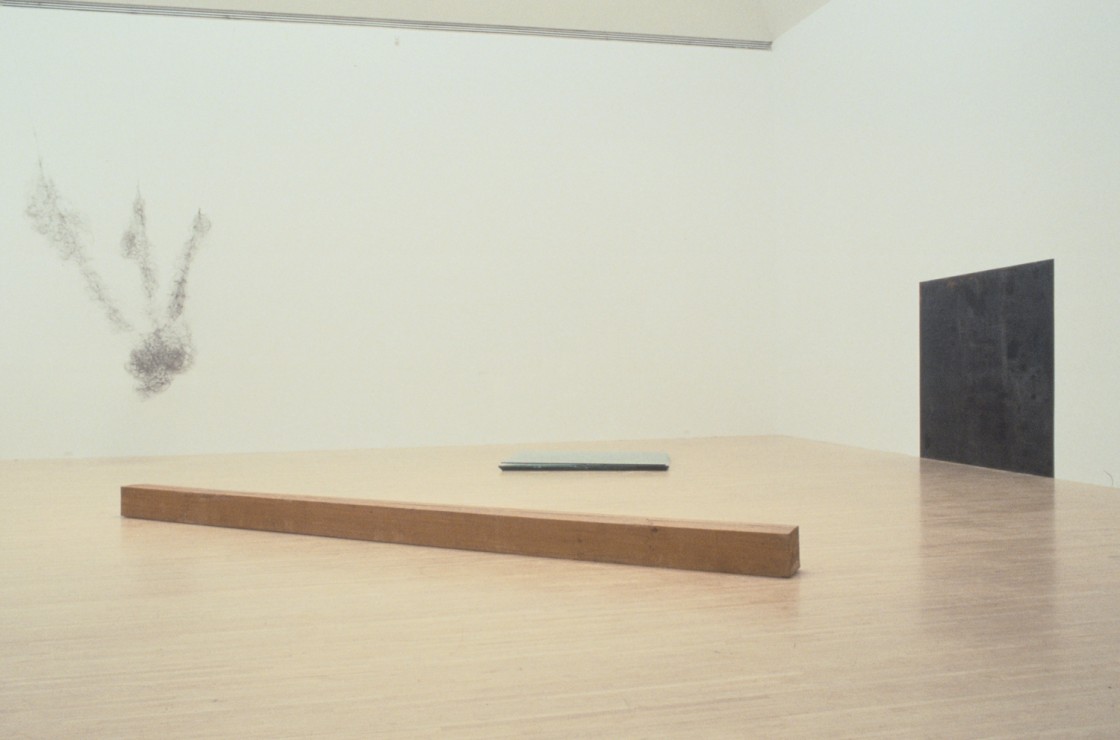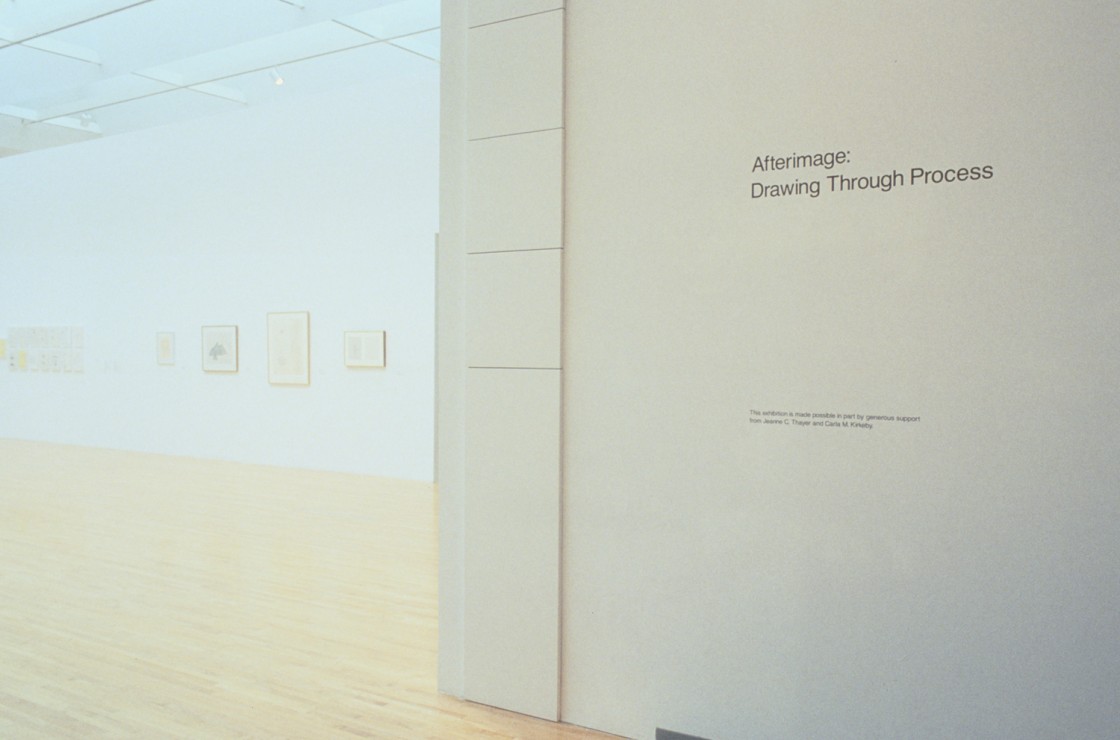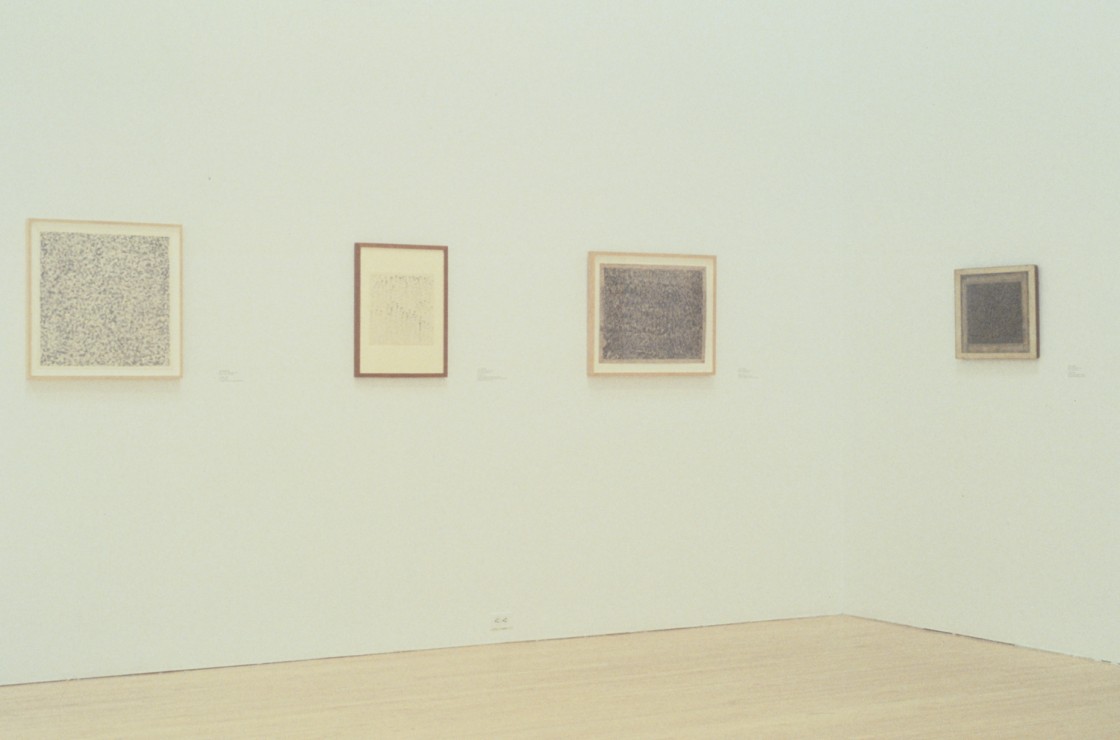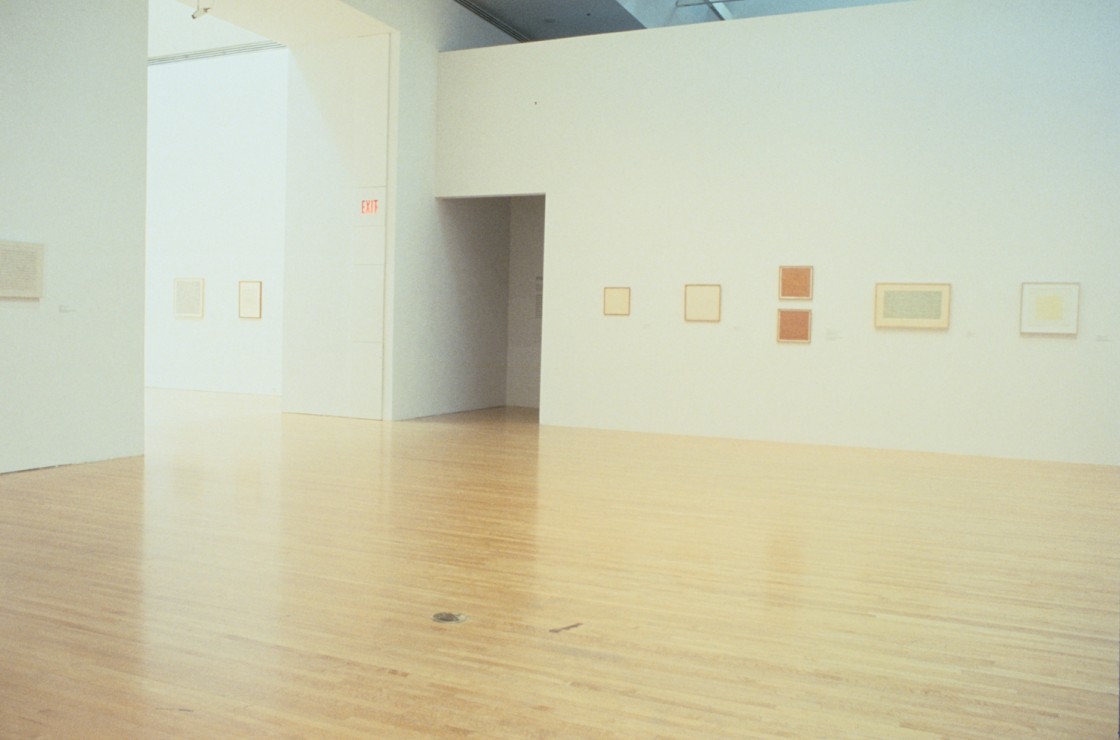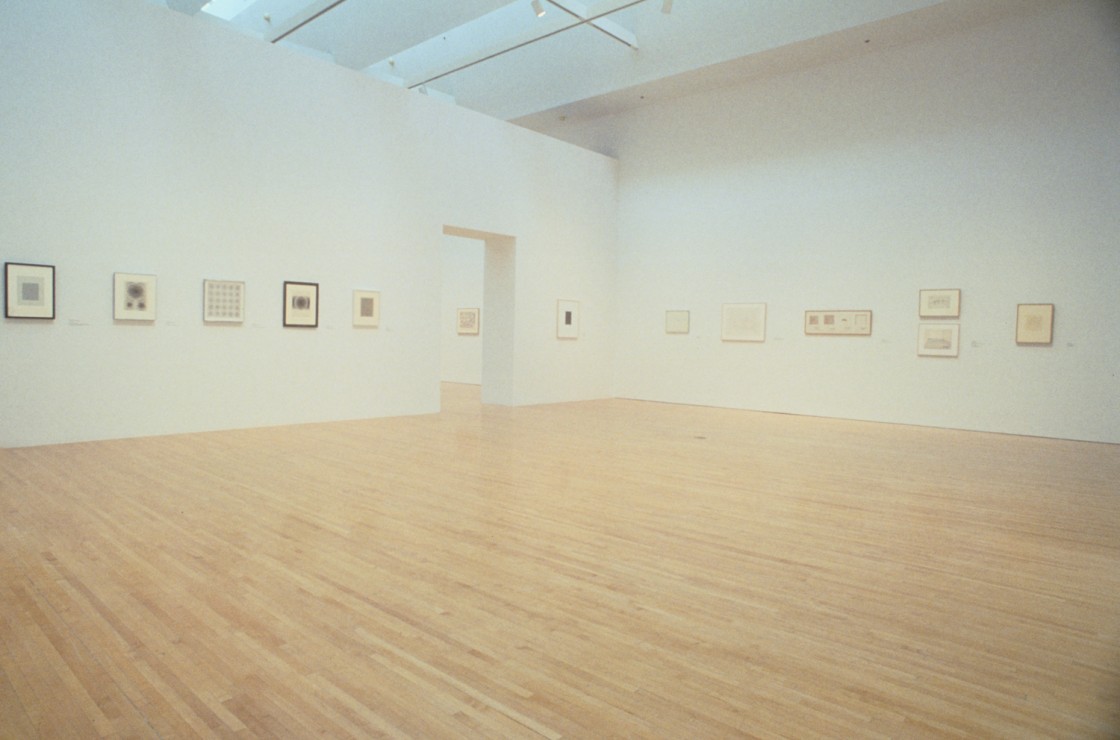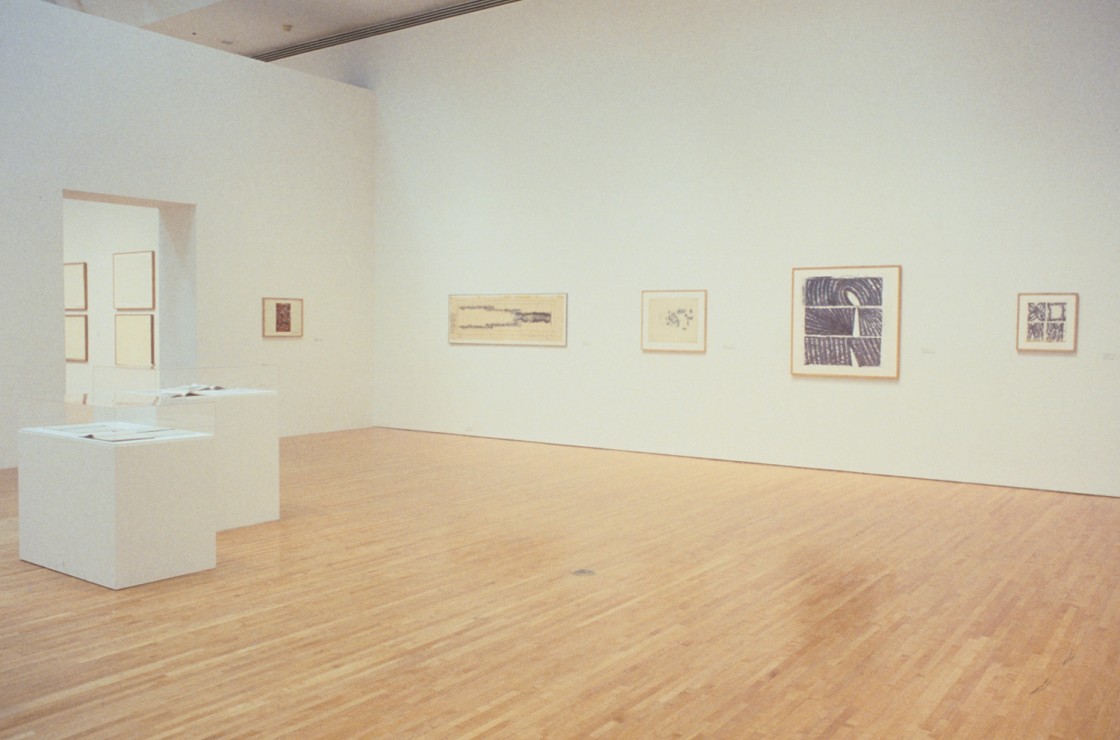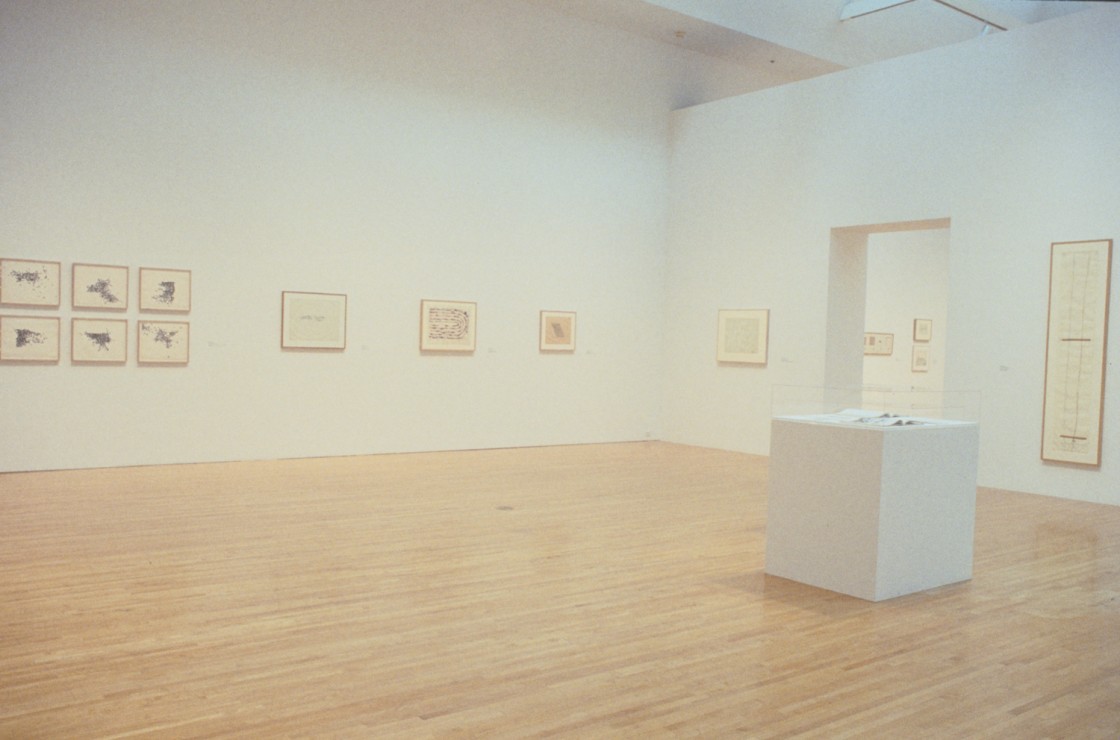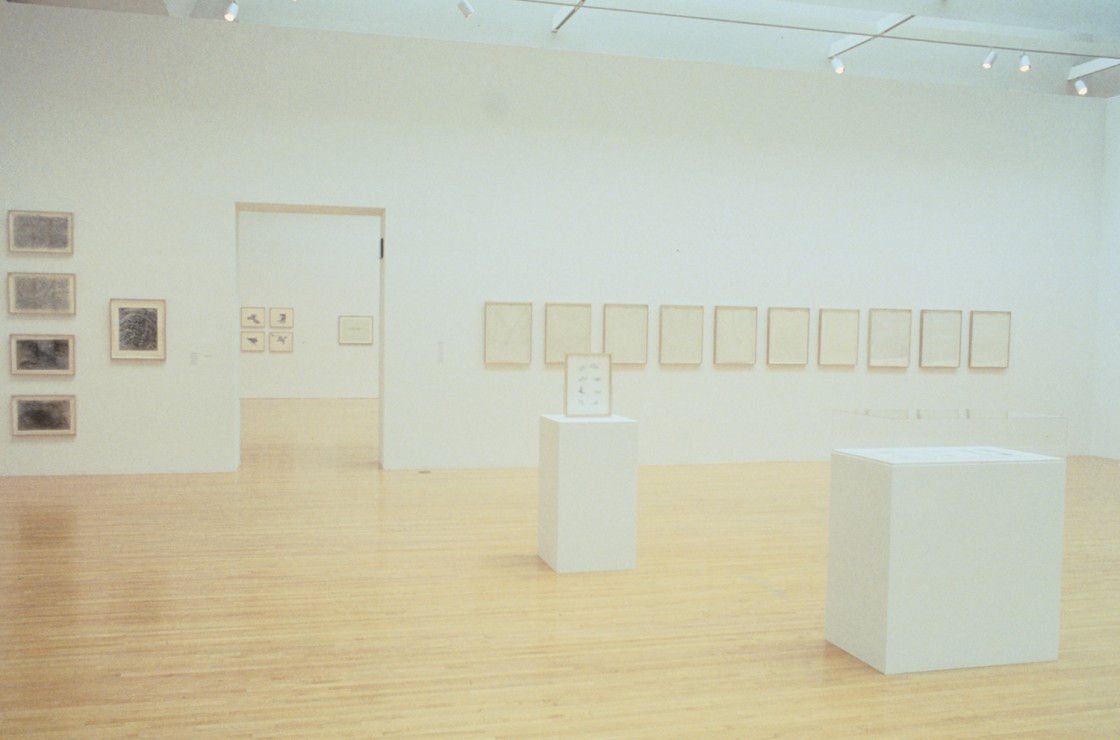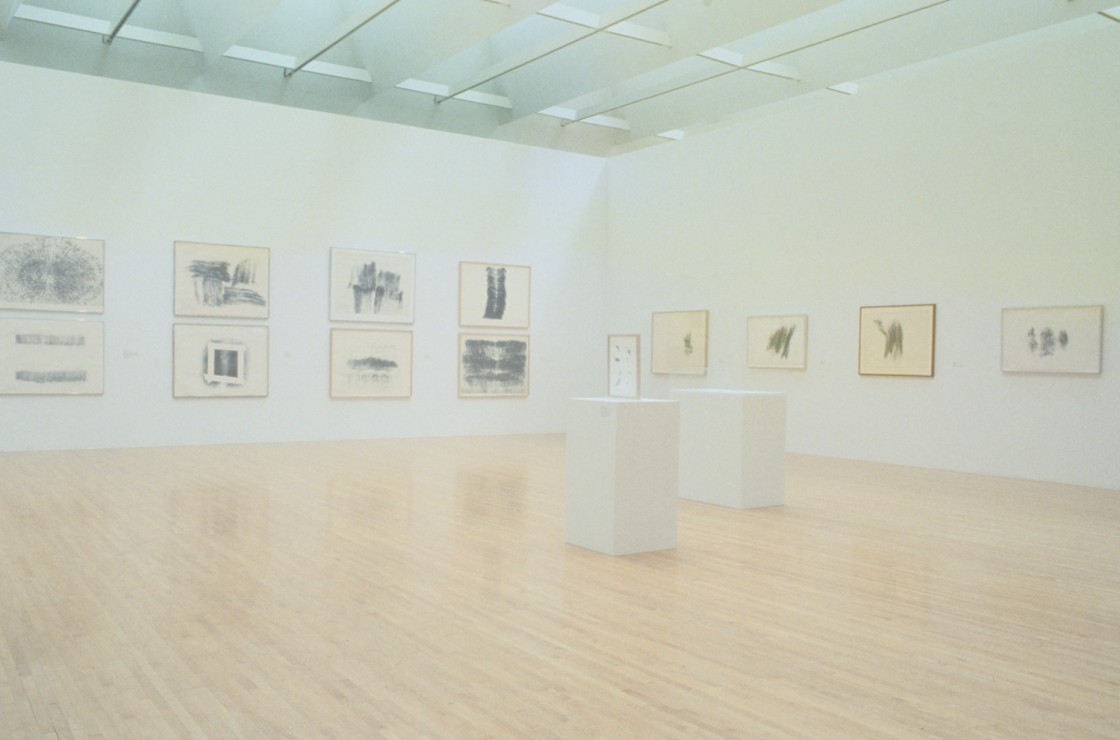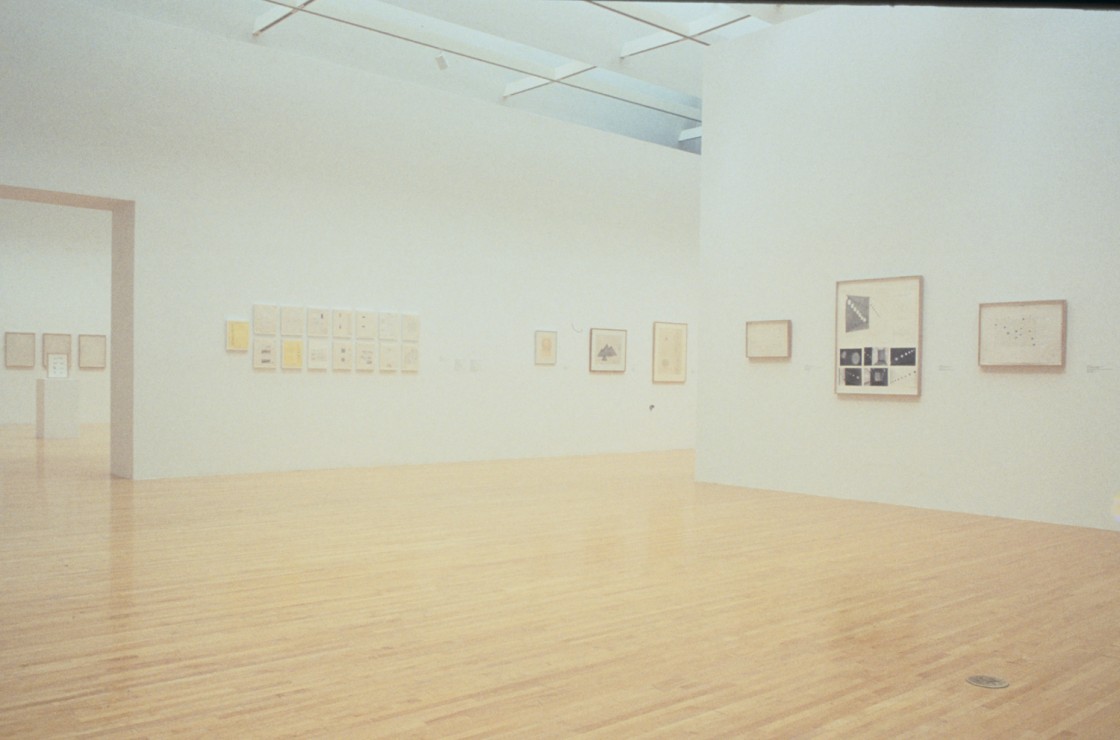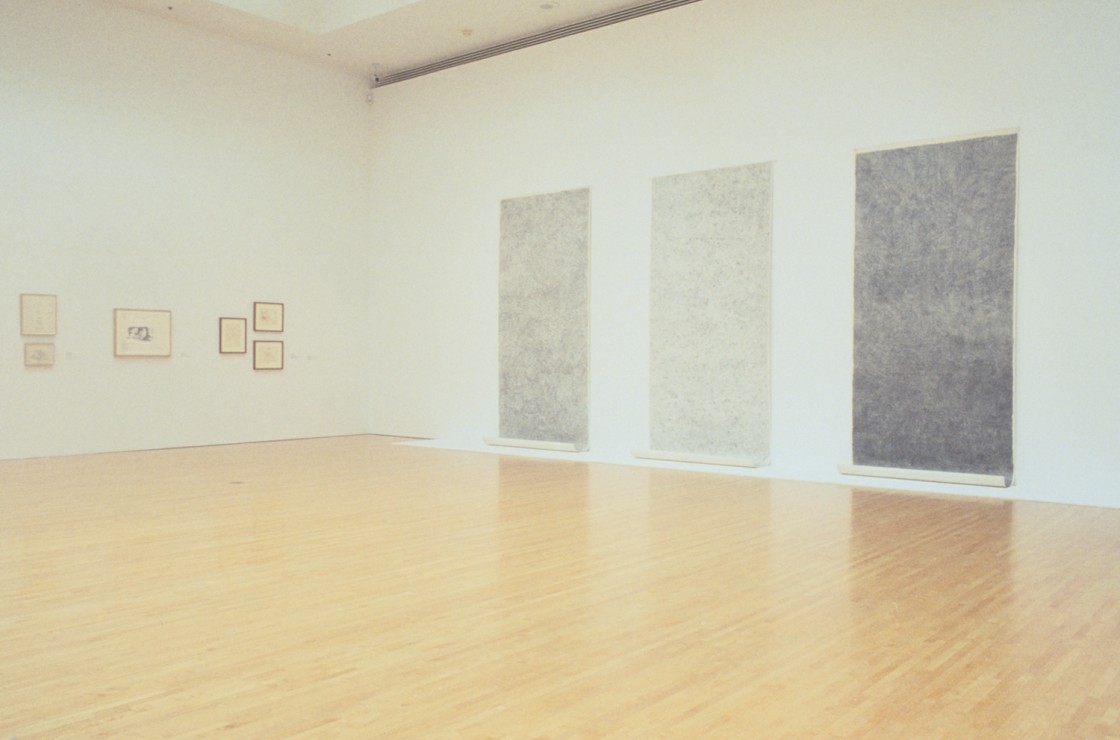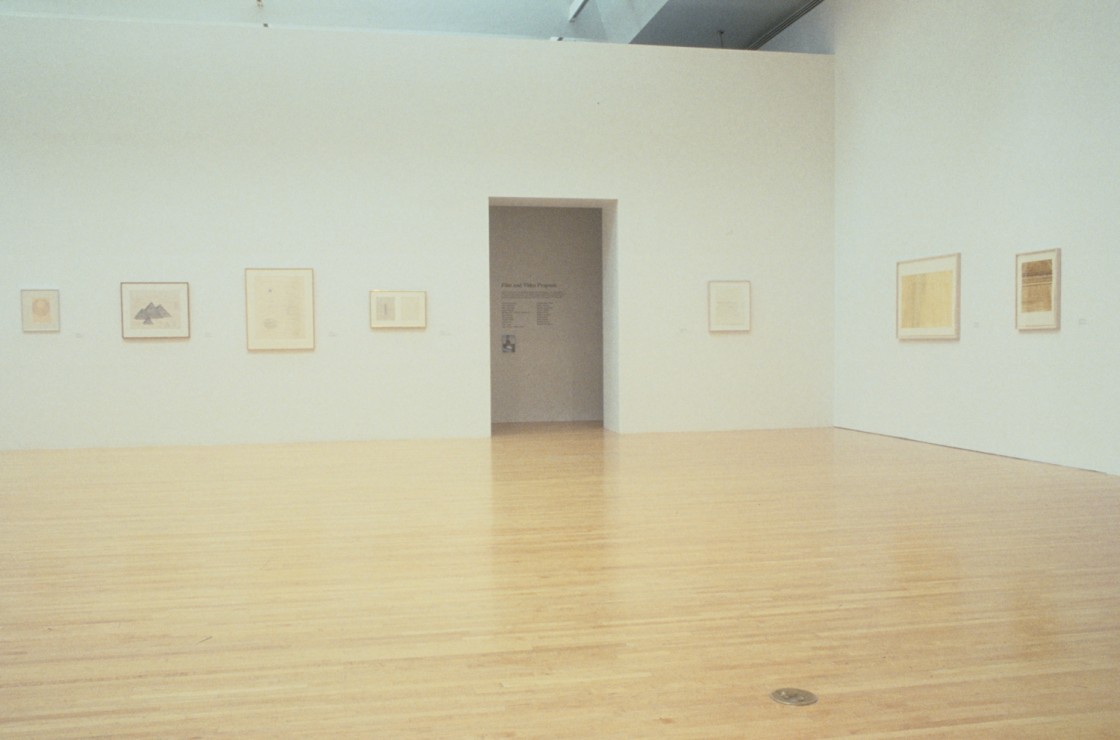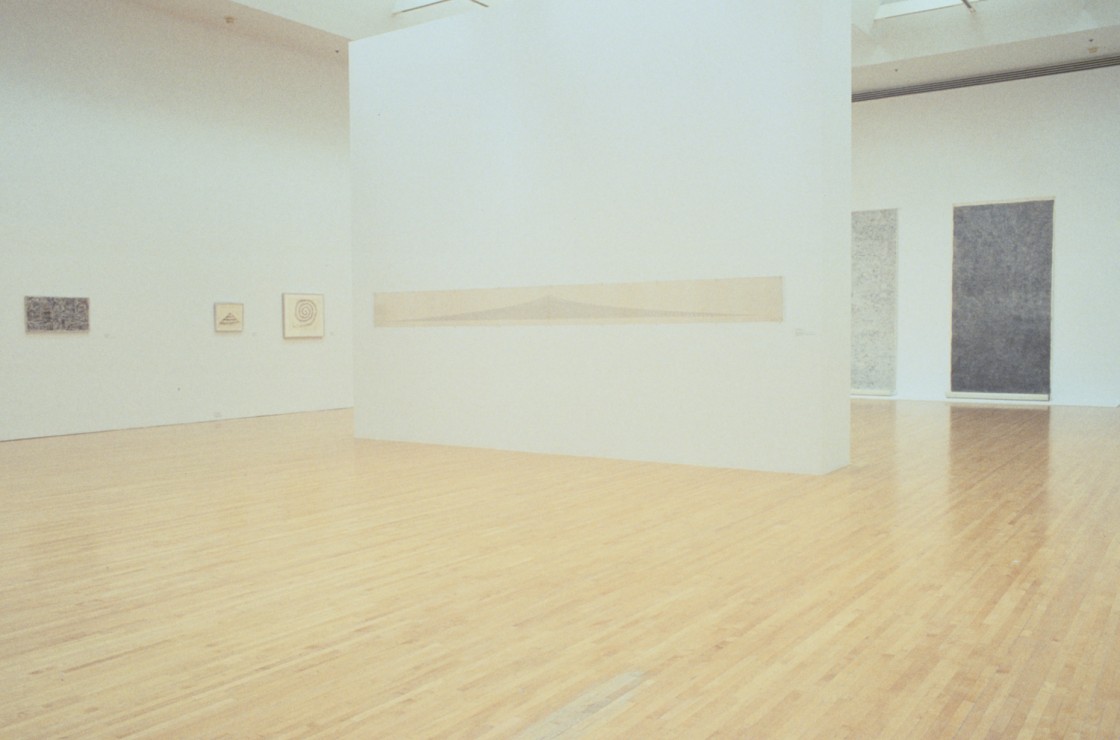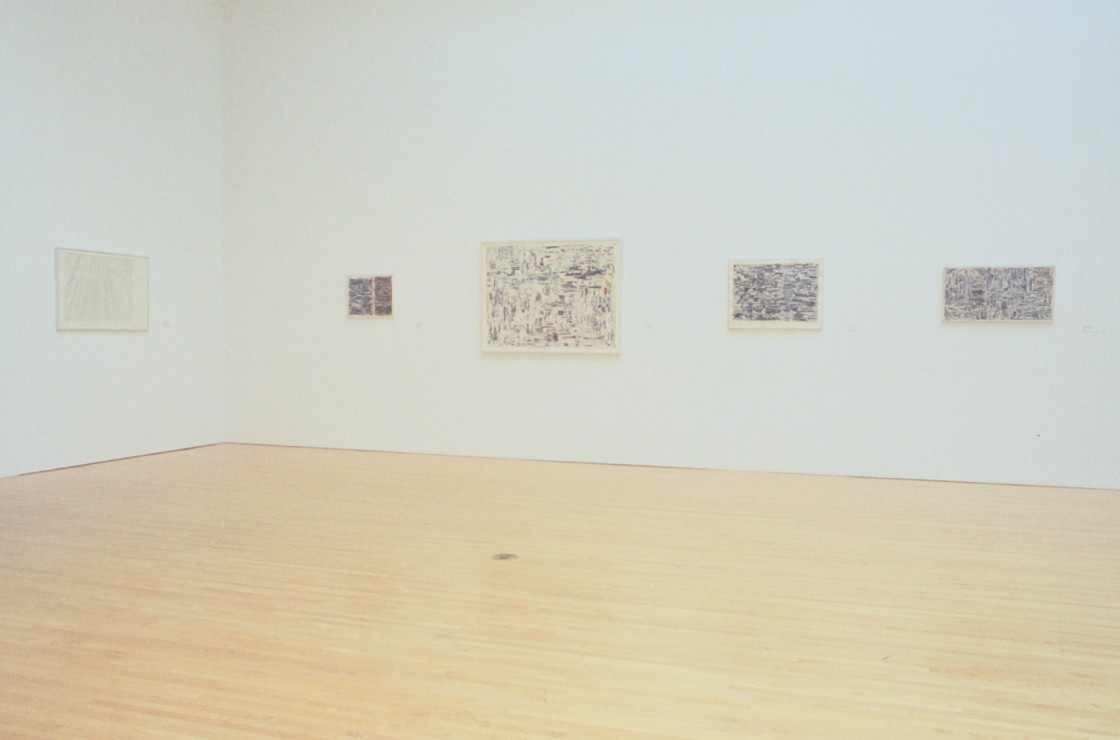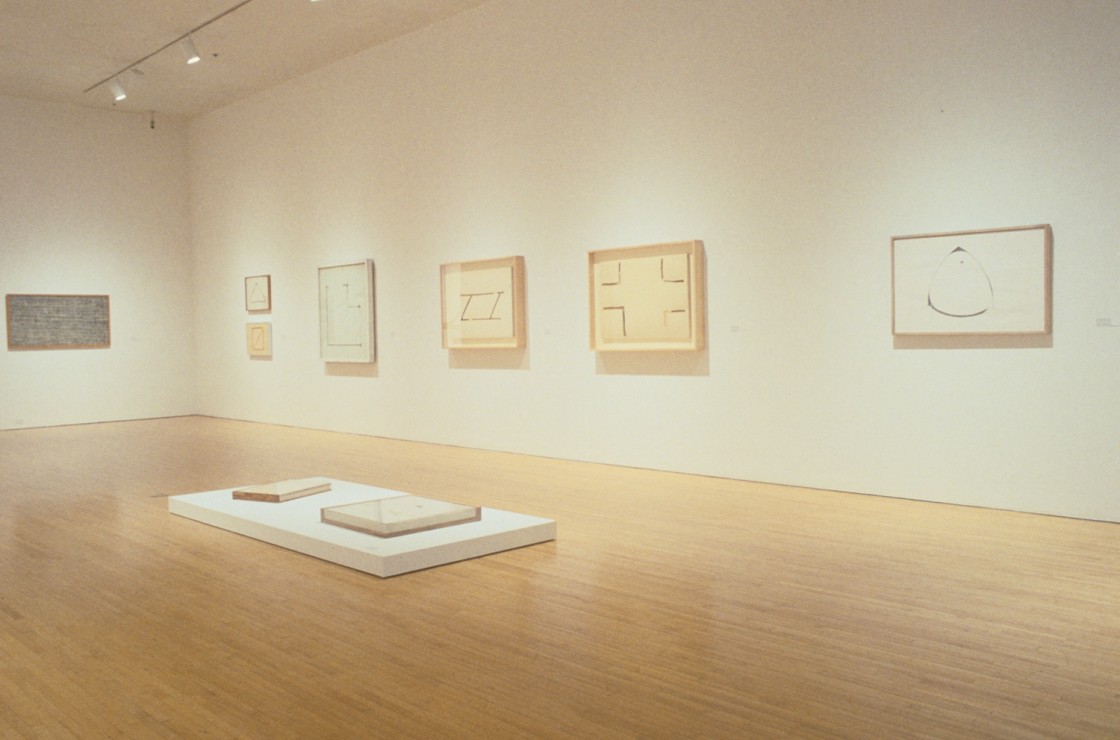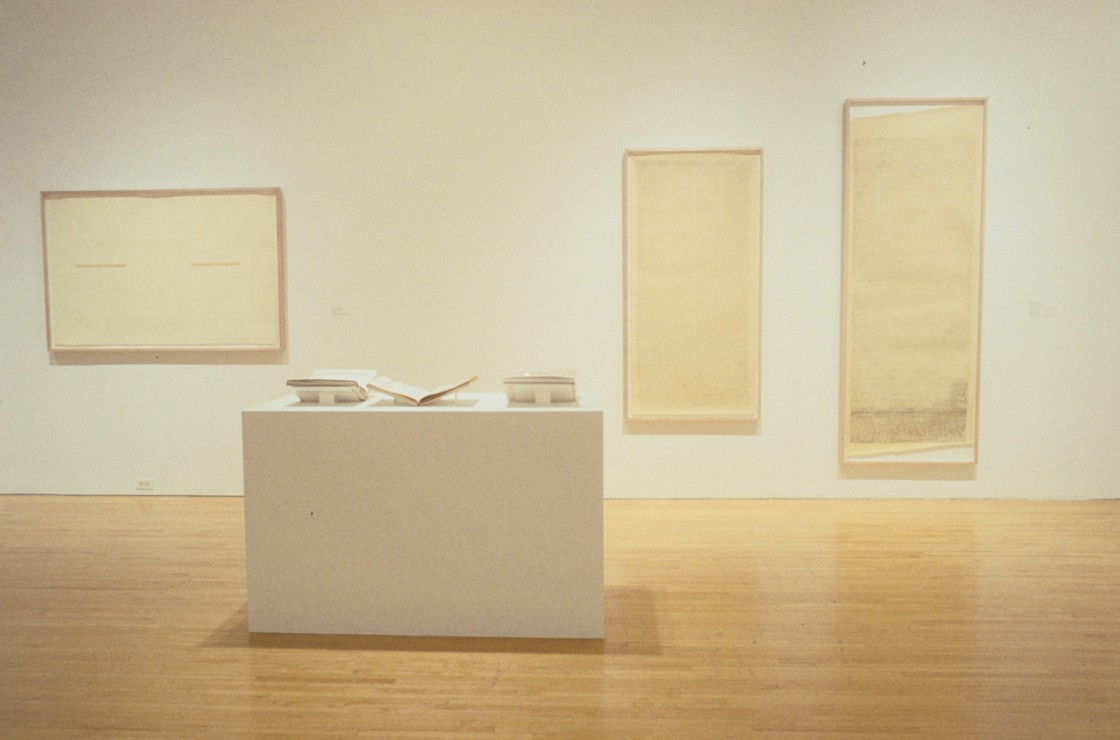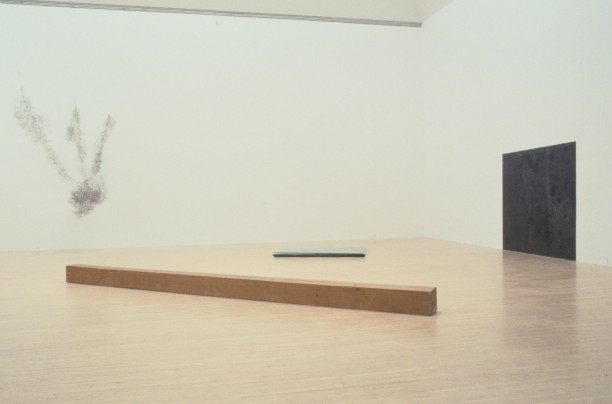Afterimage: Drawing Through Process is a major exhibition exploring process art through the medium of drawing. Comprising over 160 works on paper produced between 1966-1974 by twenty-four American artists, the exhibition ranges from the transitory and intimate to monumentally scaled works that impact the physical experience of the viewer. Following its showing at MOCA, the exhibition will travel to several national venues including the Contemporary Arts Museum in Houston and the Henry Art Gallery, University of Washington in Seattle.
Organized by MOCA and curated by MOCA Associate Curator Connie Butler, the exhibition highlights not only diverse approaches to drawing but also shared beliefs about experimenting with the material, process, and form of drawings. These artists are William Anastasi, Mel Bochner, Agnes Denes, Nancy Grossman, Robert Grosvenor, Marcia Hafif, Eva Hesse, Nancy Holt, Barry Le Va, Sol LeWitt, Lee Lozano, Gordon Matta-Clark, Robert Morris, Bruce Nauman, Robert Overby, Sylvia Plimack Mangold, Yvonne Rainer, Dorothea Rockburne, Alan Saret, Joel Shapiro, Robert Smithson, Michelle Stuart, Richard Tuttle, and Jack Whitten.
The term “process art” has been used to describe a transitional period of radical experimentation in the history of postwar American sculpture. It refers to an approach to sculpture, practiced by American artists at the end of the 1960s and early 1970s, which involved the anti-formal, and random arrangement of nontraditional art material that contrasted with painterly abstraction and the reductive formalism of minimalist sculpture. Among the first generation of artists with academic art school training, often in painting, a number of these artists found their way to making sculpture, through the gestural manipulation of materials in a way which initially imitated abstract expressionist painting. They later became interested in the formal properties of the materials themselves. By the end of the decade, artists such as Eva Hesse, Barry LeVa, Bruce Nauman, Alan Saret, Joel Shapiro, Robert Smithson, and Richard Tuttle, were making sculptural work associated with process art, or post-minimalism, the sculptural movement with which it is most often associated.
During the period highlighted by the exhibition, attitudes about the definition of studio practice and the idea of art as work changed dramatically. Process-oriented earthworks and related studies and drawings by Nancy Holt, Robert Smithson, and Michelle Stuart introduced content into a reductive minimalist vocabulary. Agnes Denes’ scientifically based abstractions and Nancy Grossman’s diary-like use of text and collage suggest proto-feminist strategies which were elaborated later in the 1970s. Mel Bochner’s writings and conceptual projects related to the dimensions and architecture of the gallery space also contributed to shifting practices during this pluralistic decade.
The exhibition also explores the drawing as a residual object, works in which the process of making dictated the form of the drawing. These are illustrated in examples such as the stacked cuttings by Gordon Matta-Clark, the Blind Time drawings by Robert Morris, the architectural rubbings of Robert Overby, and folded construction drawings by Sol LeWitt. The elemental processes and simple materials in Dorothea Rockburne’s series Drawing Which Makes Itself dictated the outcome of the finished work on paper. Early drawings of body-based sculptures by Bruce Nauman introduce ideas about the body’s relationship to space and the architecture of the gallery. Drawings by Robert Smithson included in the exhibition record his earthwork projects and the extension of process art into the landscape.
Afterimage: Drawing Through Process is accompanied by a 152-page illustrated catalogue with essays by Butler, and Pamela M. Lee, associate professor of art history at Stanford University. The publication will be distributed by MIT Press.
The exhibition includes screenings of film and video, including the work of William Anastasi, Mel Bochner, Marcia Hafif, Nancy Holt, Gordon Matta-Clark, Bruce Nauman, Yvonne Rainer, and others.
Afterimage: Drawing Through Process is made possible in part by generous support from Jeanne C. Thayer and Carla M. Kirkeby.
